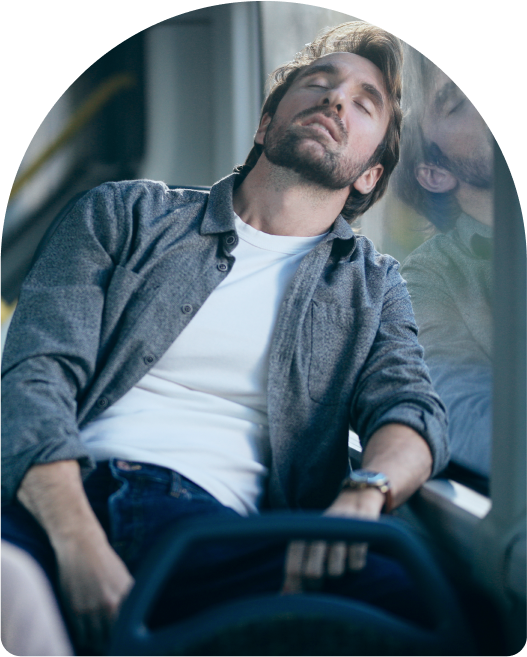Narcolepsy is a neurological sleep disorder characterized by severe and persistent daytime sleepiness that can impact people at school, at work, and in social settings.
Individuals with narcolepsy have an overwhelming need to fall asleep many times throughout the day. These periods of sleep during the day can last from a few seconds to several minutes and in some cases, for an hour or longer.
Narcolepsy affects the brain’s ability to regulate sleep wake cycles. People suffering from narcolepsy experience daytime and nighttime differently than people without narcolepsy. Their regulation of sleep is disrupted meaning that the boundaries between wakefulness and sleep are less distinct, and elements of sleep and wakefulness can mix.
Symptoms typically develop over several months and last a lifetime. While it is manageable, people living with narcolepsy can find it difficult to perform everyday tasks and it can have an impact on their mental health.
Although rare compared to many other sleep disorders, narcolepsy is estimated to affect 1 in 2000 people in the USA. The onset of symptoms is usually first detected between the ages of 10 to 20, but narcolepsy is often only diagnosed later in life. It is commonly confused with other health issues or normal development. Unfortunately, most individuals with narcolepsy remain undiagnosed.

The symptoms and the severity of narcolepsy differ among individuals. Excessive daytime sleepiness is experienced by all patients. Narcolepsy symptoms can include:
It is recognized that there are two major types of narcolepsy: Type 1 and Type 2.
Type 1 narcolepsy is the more common of the two types of narcolepsy. People with Type 1 narcolepsy display episodes of cataplexy in addition to excessive daytime sleepiness and other symptoms. Cataplexy is a weakening and sudden loss of muscle tone.
In patients diagnosed with Type 2 narcolepsy, cataplexy was not evident.

There are resources available in Canada to help you and your loved ones living with narcolepsy.
Uncovering Narcolepsy aims to share information about narcolepsy and resources available to Canadians living with this disorder. The content on this site is meant to raise awareness about narcolepsy. A sleep specialist can assess your symptoms and make a diagnosis.

